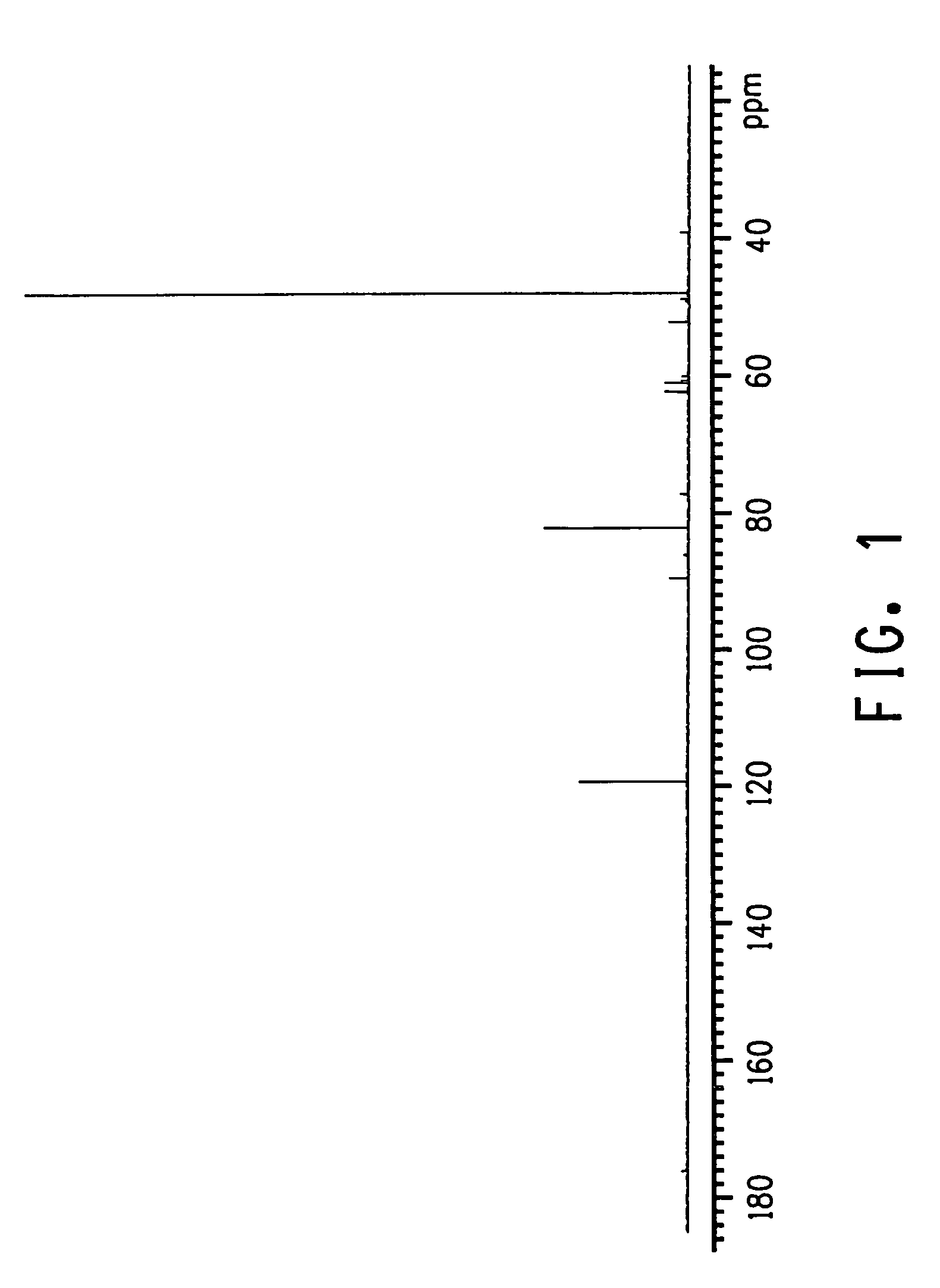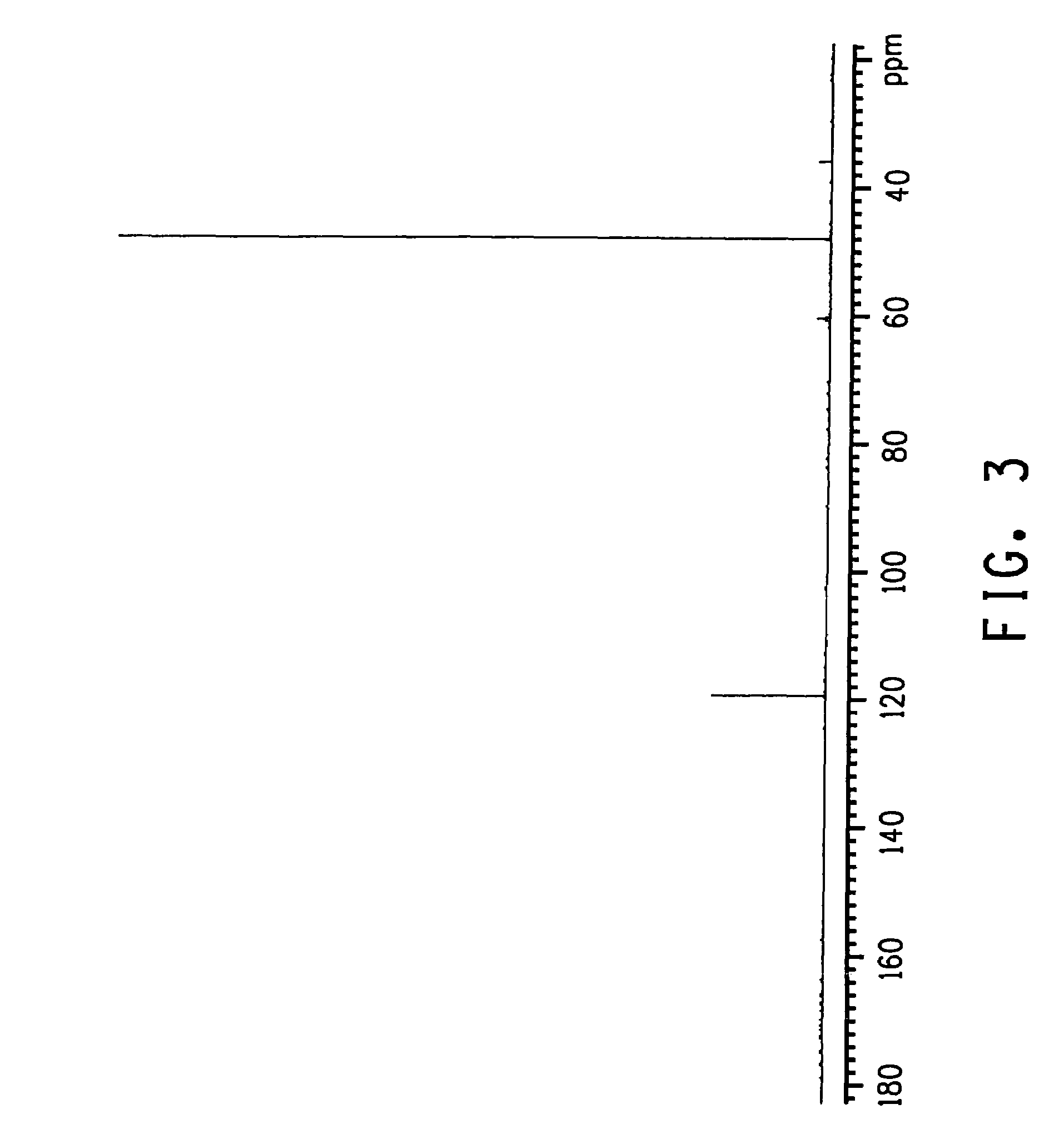Process for producing glycolic acid from formaldehyde and hydrogen cyanide
- Summary
- Abstract
- Description
- Claims
- Application Information
AI Technical Summary
Problems solved by technology
Method used
Image
Examples
example 1
Pre-Heating 90% of Formaldehyde Continuous Feed
[0297]Approximately 10.18 g of 52 wt % aqueous solution of formaldehyde (<1% methanol, DuPont) was mixed with 12.81 g of water, and the slurry was heated to about 76° C. for about 40 min until the mixture became a clear homogeneous liquid solution. The solution was allowed to cool to ambient temperature and remained a homogeneous liquid. 0.16 mL of 16.7 wt % aqueous NaOH solution was then added to the formaldehyde solution. 1.56 g of the resulting solution (23 wt % formaldehyde) was placed in the reaction vessel, and the remainder was used for the continuous formaldehyde feed.
[0298]The reaction vessel, equipped with stirring, was placed within an oil bath maintained at 55° C. The approximately 12-inch section of the formaldehyde feed line ( 1 / 16″ OD (about 1.6 mm)×0.040″ ID (about 1.02 mm)) directly preceding the inlet to the reaction flask was heated to 120° C., and the reactants were then each continuously pumped into the reaction ves...
example 2
Pre-Heating 100% of Formaldehyde Continuous Feed
[0303]Approximately 10.18 g of 52 wt % aqueous solution of formaldehyde (<1% methanol, E.I. DuPont de Nemours) was mixed with 12.81 g of water, and the slurry was heated to about 76° C. for about 40 min until the mixture became a clear homogeneous liquid solution. The solution was allowed to cool to ambient temperature and remained a homogeneous liquid. 0.14 mL of 16.7 wt % aqueous NaOH solution was then added to the formaldehyde solution. The resulting solution (23 wt % formaldehyde) was used for the continuous formaldehyde feed.
[0304]The reaction vessel, equipped with stirring, was charged with a mixture of 0.18 g of HCN in 3.4 g of water and then placed within an oil bath maintained at 55° C. The approximately 12-inch section of the formaldehyde feed line ( 1 / 16″ OD×0.040″ ID) directly preceding the inlet to the reaction flask was heated to 120° C., and the reactants were then each continuously pumped into the reaction vessel over a...
example 3
Pre-Heating 100% of Formaldehyde Continuous Feed
[0309]Approximately 14.20 g of 37 wt % aqueous solution of formaldehyde (10-15% methanol, Acros Organics, Morris Plains, N.J.) was mixed with 8.78 g of water and 0.14 mL of 16.7 wt % aqueous NaOH. The resulting solution (23 wt % formaldehyde) was used for the continuous formaldehyde feed.
[0310]The reaction vessel, equipped with stirring, was charged with a mixture of 0.18 g of HCN in 3.4 g of water and then placed within an oil bath maintained at 55° C. The approximately 12-inch section of the formaldehyde feed line ( 1 / 16″ OD×0.040″ ID) directly preceding the inlet to the reaction flask was heated to 120° C., and the reactants were then each continuously pumped into the reaction vessel over a period of about 2.0 hr, as follows:[0311]4.21 mL / hr of 50 wt % aqueous HCN solution (d=0.86 g / mL)[0312]7.67 mL / hr of 23 wt % aqueous formaldehyde, described above (d=1.07 g / mL).
[0313]After about 2.0 hr, the feeds were stopped, the reaction vessel...
PUM
| Property | Measurement | Unit |
|---|---|---|
| Temperature | aaaaa | aaaaa |
| Temperature | aaaaa | aaaaa |
| Temperature | aaaaa | aaaaa |
Abstract
Description
Claims
Application Information
 Login to View More
Login to View More - R&D
- Intellectual Property
- Life Sciences
- Materials
- Tech Scout
- Unparalleled Data Quality
- Higher Quality Content
- 60% Fewer Hallucinations
Browse by: Latest US Patents, China's latest patents, Technical Efficacy Thesaurus, Application Domain, Technology Topic, Popular Technical Reports.
© 2025 PatSnap. All rights reserved.Legal|Privacy policy|Modern Slavery Act Transparency Statement|Sitemap|About US| Contact US: help@patsnap.com



